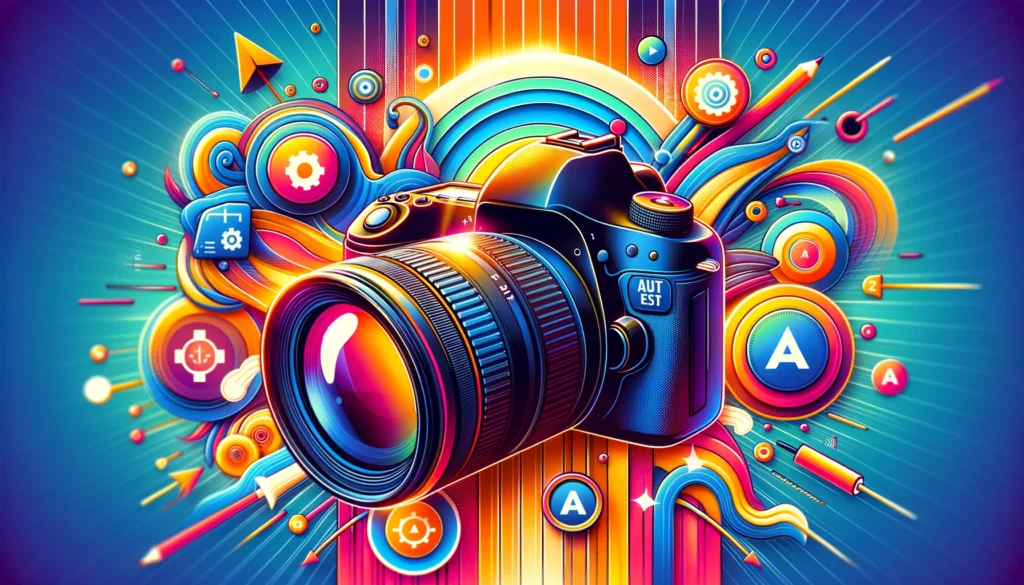Table of Contents
Introduction
Embarking on the journey of DSLR photography can be both exciting and daunting. With a myriad of settings, modes, and technical terms, it’s easy to feel overwhelmed. Fear not, as this blog post aims to demystify some of the core DSLR settings that all start with the letter ‘A’. From Auto Exposure to Aperture Priority, understanding these basics will empower you to take control of your camera and capture stunning photographs that truly reflect your vision.
Understanding Your DSLR Photography
Auto Exposure (AE)
What It Is – Auto Exposure is your camera’s way of ensuring your photographs have the correct lighting by automatically adjusting the aperture and shutter speed.
Modes Explained
- Full Auto Mode – The camera takes control of all settings, except zoom. Perfect for beginners who are still getting used to their camera.
- Manual Exposure Modes – Offers more control to the photographer, with options like Program AE, Aperture Priority AE, Shutter Priority AE, and full manual exposure, each catering to different photography needs and styles.
Auto Focus (AF)
Focus Made Simple: Auto Focus is the feature that automatically sharpens the image of your subject, ensuring clarity and detail in your photos.
AE Lock and AF Lock
- Hold That Perfect Setting – These locks allow you to maintain your desired exposure settings and focus even when you recompose your shot, ensuring that your final image looks exactly as you envisioned.
Understanding Autofocus Modes – The Right Focus for the Right Moment –
- One Shot Autofocus – Ideal for stationary subjects.
- AI Servo Autofocus – Continuously adjusts focus for moving subjects, perfect for action shots.
- AI Focus Autofocus – Combines both modes to adapt to subjects that might move unexpectedly.
Angle of View
See the Bigger Picture – This term describes how much of the scene your camera can capture, which varies depending on the lens used.
Auto Lighting Optimizer
Lighting, Optimized – Automatically adjusts the brightness and contrast of your images, particularly useful in dark or low-contrast environments.
Aperture Priority Auto Exposure
Creative Control Over Depth of Field – Allows you to manually set the aperture while the camera adjusts other settings, offering creative control over the depth of field in your photographs.
Expanding Your DSLR Knowledge
Understanding these ‘A’ settings is just the beginning. Each setting opens up new possibilities for creative expression and technical mastery. Experimenting with these settings will not only improve your photography skills but also deepen your appreciation for the art and science of photography.
FAQ’s
When should I use Auto Exposure Lock (AEL)?
Use AEL when you have the correct exposure but want to recompose your shot without losing those settings. It’s particularly useful in high-contrast scenes.
How do I choose between the different Autofocus modes?
Choose One Shot for static subjects, AI Servo for moving subjects, and AI Focus when you’re unsure if the subject will move.
What is the advantage of using Aperture Priority mode?
Aperture Priority mode gives you control over the depth of field, allowing you to creatively blur the background or keep everything in sharp focus.
Can Auto Focus work in low light?
Auto Focus can struggle in low light. In such scenarios, using a lens with a wider aperture or switching to manual focus can help.
Conclusion – Embracing the Journey of DSLR Mastery
Stepping into the world of DSLR photography with a grasp of these essential ‘A’ settings is just the beginning of a fulfilling creative journey. As you experiment with Auto Exposure, Auto Focus, and Aperture Priority modes, you’ll not only enhance the technical quality of your photos but also start to see the world through a more artistic lens. Remember, the path to mastering photography is a personal journey filled with trial and error, discovery, and growth.
By taking the time to understand and experiment with these settings, you’re laying a solid foundation for your photography skills. As you become more comfortable with your DSLR, challenge yourself to step out of your comfort zone and explore more advanced techniques and settings. Photography is a never-ending learning process, where each photo tells a story and every setting adjustment opens a new door to creative possibilities.
So, grab your camera, embrace the ‘A’s of DSLR photography, and let your creative vision lead the way. The most important thing is to keep shooting, learning, and enjoying the process. Your journey through the world of photography is bound to be an exciting one, filled with moments of inspiration, learning, and, most importantly, joy.
To Read More Articles About Photography, Click Here.
